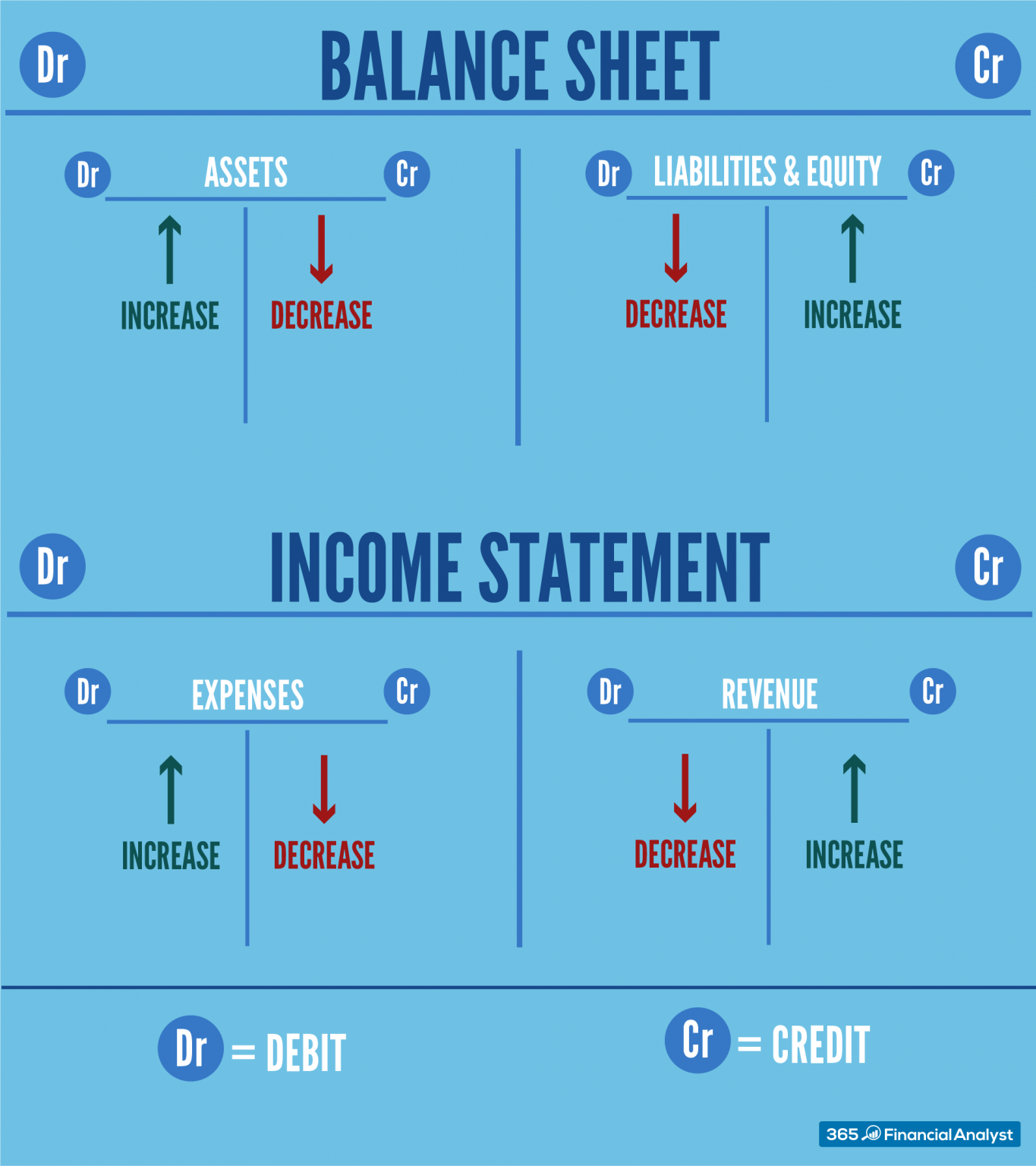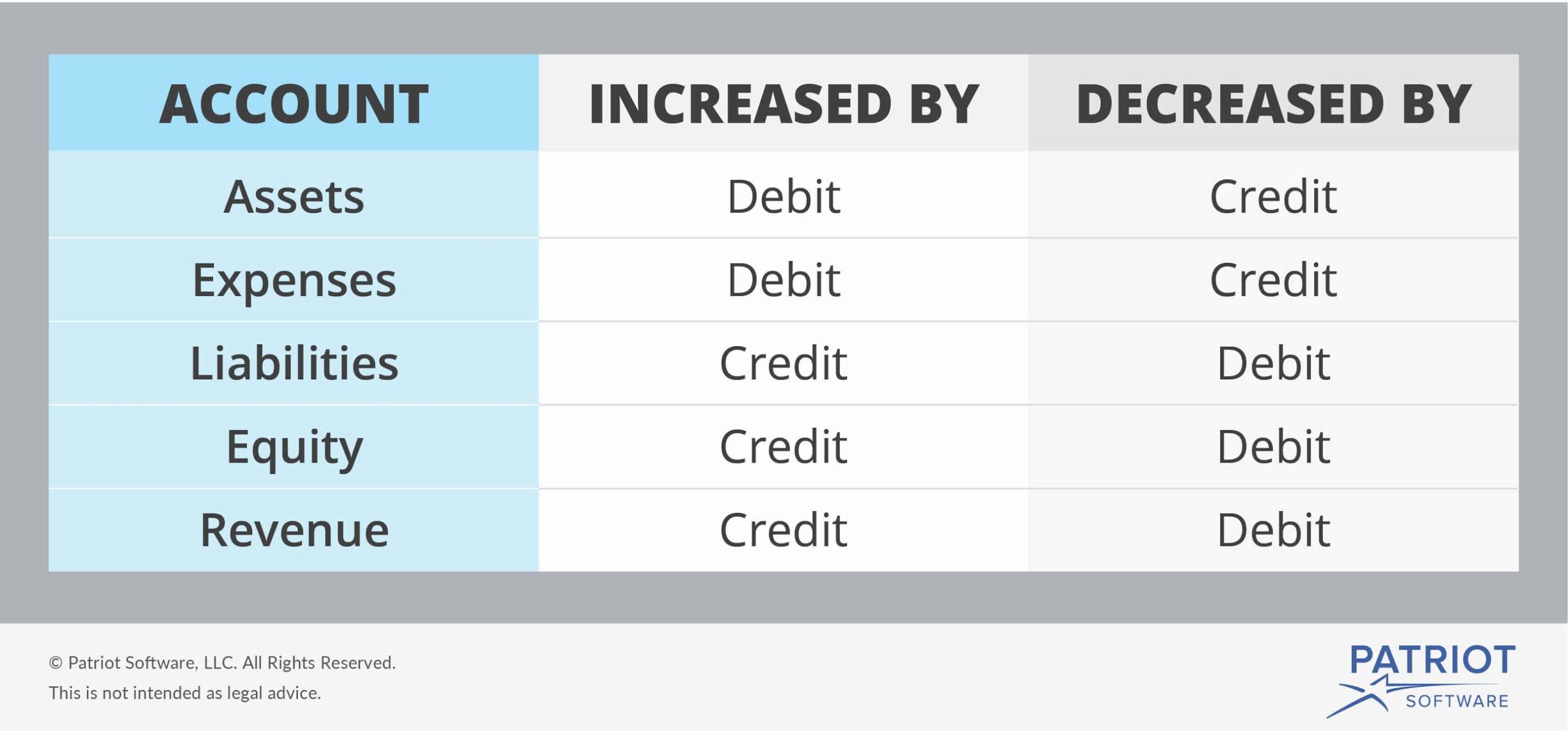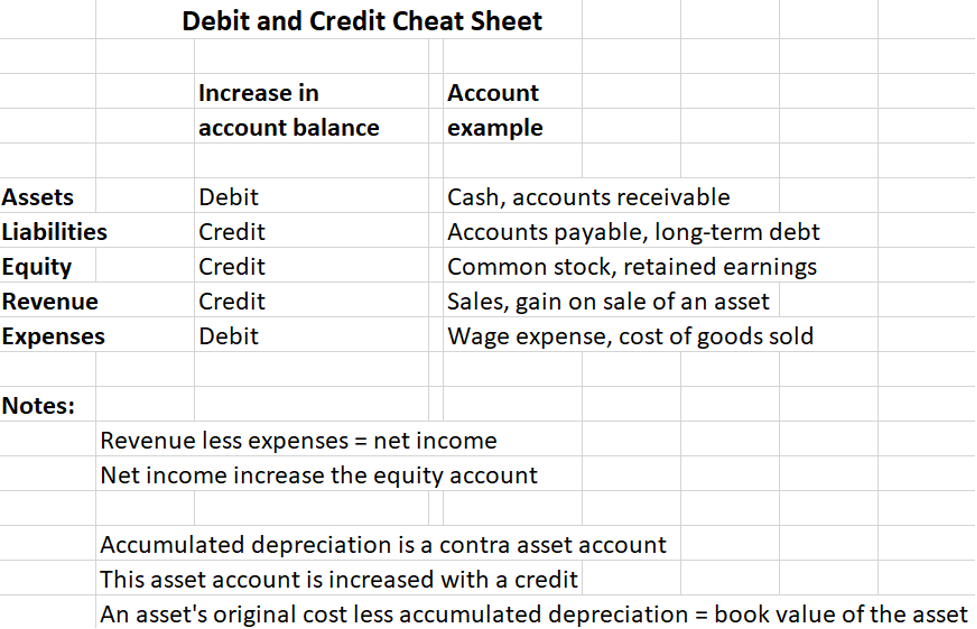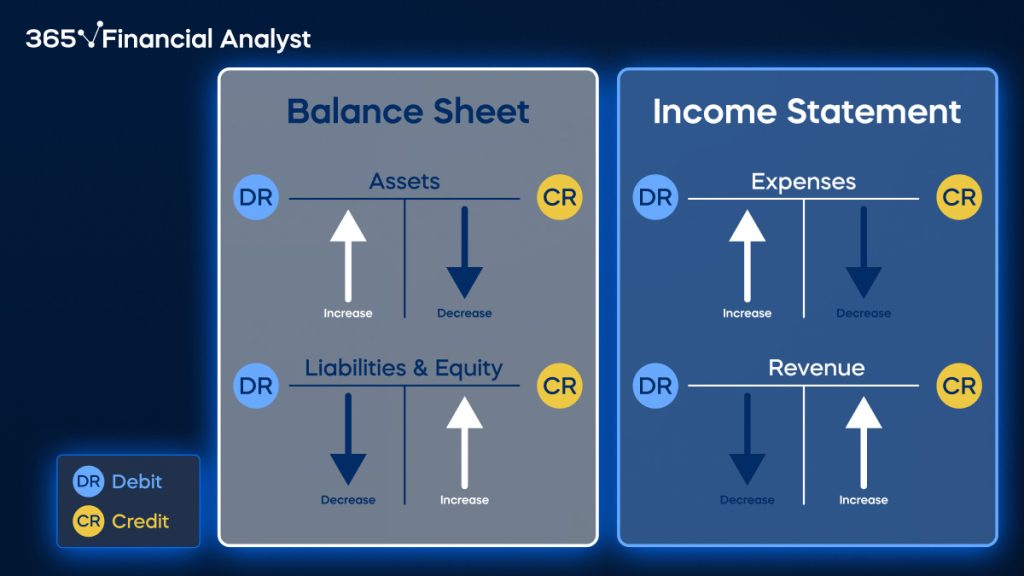Debit And Credits Cheat Sheet - Credits are where the money came from or what you gave (liabilities, ownership, revenues) or stated another way. What are the five rules of debits and credits? The easiest way to remember the meaning of debit and credit in accounting is as follows: When you deposit money in your bank account you are increasing or debiting your checking account. Use the cheat sheet in this article to get to grips with how credits and debits affect your accounts. What are debits and credits? When you write a check, you are decreasing or crediting your. As a general rule, if a debit increases 1 type of account, a credit will decrease it. Asset accounts normally have debit balances. Debits are what you received or what you bought (assets or expenses) or stated another way, how you used your funds.
As a general rule, if a debit increases 1 type of account, a credit will decrease it. Asset accounts normally have debit balances. When you deposit money in your bank account you are increasing or debiting your checking account. What are debits and credits? What are the five rules of debits and credits? The easiest way to remember the meaning of debit and credit in accounting is as follows: Credits are where the money came from or what you gave (liabilities, ownership, revenues) or stated another way. When you write a check, you are decreasing or crediting your. Debits are what you received or what you bought (assets or expenses) or stated another way, how you used your funds. Use the cheat sheet in this article to get to grips with how credits and debits affect your accounts.
Credits are where the money came from or what you gave (liabilities, ownership, revenues) or stated another way. Use the cheat sheet in this article to get to grips with how credits and debits affect your accounts. The easiest way to remember the meaning of debit and credit in accounting is as follows: What are debits and credits? When you deposit money in your bank account you are increasing or debiting your checking account. Asset accounts normally have debit balances. Debits are what you received or what you bought (assets or expenses) or stated another way, how you used your funds. As a general rule, if a debit increases 1 type of account, a credit will decrease it. When you write a check, you are decreasing or crediting your. What are the five rules of debits and credits?
Printable Debits And Credits Cheat Sheet
When you deposit money in your bank account you are increasing or debiting your checking account. Debits are what you received or what you bought (assets or expenses) or stated another way, how you used your funds. What are debits and credits? The easiest way to remember the meaning of debit and credit in accounting is as follows: Asset accounts.
Debits and Credits Cheat Sheet 365 Financial Analyst
Debits are what you received or what you bought (assets or expenses) or stated another way, how you used your funds. When you deposit money in your bank account you are increasing or debiting your checking account. As a general rule, if a debit increases 1 type of account, a credit will decrease it. What are debits and credits? Use.
Printable Debits And Credits Cheat Sheet
Debits are what you received or what you bought (assets or expenses) or stated another way, how you used your funds. What are debits and credits? When you deposit money in your bank account you are increasing or debiting your checking account. Use the cheat sheet in this article to get to grips with how credits and debits affect your.
Printable Debits And Credits Cheat Sheet
When you deposit money in your bank account you are increasing or debiting your checking account. Credits are where the money came from or what you gave (liabilities, ownership, revenues) or stated another way. What are debits and credits? The easiest way to remember the meaning of debit and credit in accounting is as follows: Debits are what you received.
Debit vs credit for business owners QuickBooks Australia
When you write a check, you are decreasing or crediting your. Credits are where the money came from or what you gave (liabilities, ownership, revenues) or stated another way. As a general rule, if a debit increases 1 type of account, a credit will decrease it. Debits are what you received or what you bought (assets or expenses) or stated.
Printable Debits And Credits Cheat Sheet
What are the five rules of debits and credits? The easiest way to remember the meaning of debit and credit in accounting is as follows: What are debits and credits? Asset accounts normally have debit balances. As a general rule, if a debit increases 1 type of account, a credit will decrease it.
Printable Debits And Credits Cheat Sheet
What are debits and credits? Asset accounts normally have debit balances. When you deposit money in your bank account you are increasing or debiting your checking account. As a general rule, if a debit increases 1 type of account, a credit will decrease it. What are the five rules of debits and credits?
Debits and Credits Cheat Sheet 365 Financial Analyst
As a general rule, if a debit increases 1 type of account, a credit will decrease it. What are debits and credits? Credits are where the money came from or what you gave (liabilities, ownership, revenues) or stated another way. The easiest way to remember the meaning of debit and credit in accounting is as follows: Asset accounts normally have.
Printable Debits And Credits Cheat Sheet
Debits are what you received or what you bought (assets or expenses) or stated another way, how you used your funds. Use the cheat sheet in this article to get to grips with how credits and debits affect your accounts. When you write a check, you are decreasing or crediting your. The easiest way to remember the meaning of debit.
Debit And Credit Cheat Sheet Chart of Debits and Credits Accounting
What are the five rules of debits and credits? Credits are where the money came from or what you gave (liabilities, ownership, revenues) or stated another way. Debits are what you received or what you bought (assets or expenses) or stated another way, how you used your funds. As a general rule, if a debit increases 1 type of account,.
What Are The Five Rules Of Debits And Credits?
What are debits and credits? The easiest way to remember the meaning of debit and credit in accounting is as follows: When you write a check, you are decreasing or crediting your. Credits are where the money came from or what you gave (liabilities, ownership, revenues) or stated another way.
When You Deposit Money In Your Bank Account You Are Increasing Or Debiting Your Checking Account.
As a general rule, if a debit increases 1 type of account, a credit will decrease it. Asset accounts normally have debit balances. Debits are what you received or what you bought (assets or expenses) or stated another way, how you used your funds. Use the cheat sheet in this article to get to grips with how credits and debits affect your accounts.









